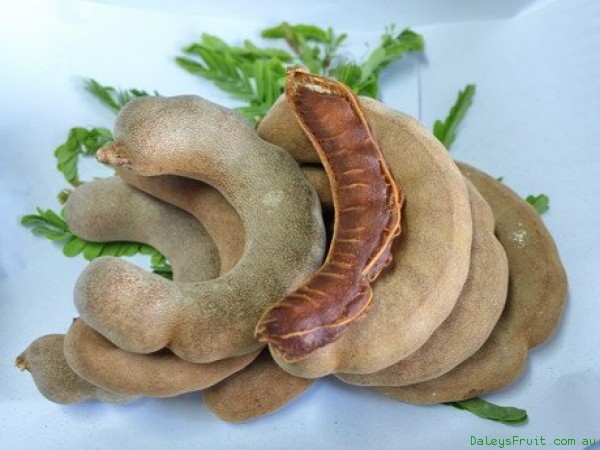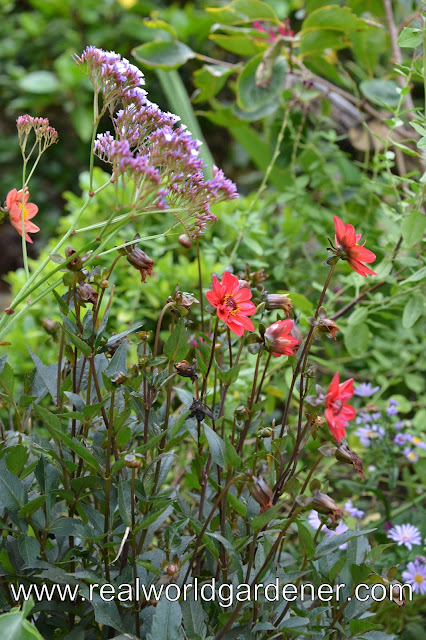TOOL TIME
Do you have all the tools you need to do those cutting jobs in the garden?Secateurs are good for small pruning jobs where you can cut stems and branches about the size of your first finger.
Generally if it's green it cuts more easily than hardened branches sometimes found lower down on shrubs and hedges.
 |
| Cut and Hold pruners. Photo. Cut Above Tools |
Or are you struggling with some old secateurs and a rusty pair of garden loppers?
Don’t know what loppers are?
Let’s find out about what tools you should be using for those pruning jobs in the garden. I'm talking with Tony Mattson, General Manager of www.cutabovetools.com.au
Some long handled pruners use the "cut and hold," method. They're about 3 metres long when extended and have a trigger.
 |
| Well used garden tool selection. |
Good for tops of Camellias or getting the fruit of mango and avocado trees.
The best tip is to hold the pruning tool that you’re thinking of buying for at least a minute to see if you can stand the weight.
This is a good idea because when you’re pruning your garden shrubs, hedges roses or whatever, you’ll be out there for a lot longer than a minute or two.
So if you think that long handled lopper is too heavy for you, don’t get the tool.
If you have any questions about the right tool for the right job, drop us a line to realworldgardener@gmail.com or write in to 2RRR PO Box 644 Gladesville NSW 1675
VEGETABLE HEROES
Tamarind Tamarindus indica of the Fabaceae
family.
Tamarind is native to Africa but
grows in most of the Asian countries these days.
It’s always a bit odd to include a
tree in this segment because you don’t think of trees as being a vegetable. Perhaps
the fruit of the tree?
In this case the pods of the tree
are edible as are the leaves.
Where the name came from?
When Arab sea-traders came across
the Tamarind tree, they thought the sticky black pulp and seeds of the fruit was
just like their native date palm, so they combined their common name for date
palm ‘Tamr’, along with the Arabic name for India (‘hindi’), to arrive at the
common name tamrhindi on which the scientific name Tamarindus is based.
Apparently Tamarind pulp has been
traded for thousands of years.
Tamarind trees have been growing in
North Queensland for many years and some of the older ones have reached
enormous size.
Did you know that Tamarind trees are
indictors of long contact between Indigenous and Macassan traders?
How we know this is because Tamarind
trees grow along the Kimberley and Arnhem Land coast are hundreds of years old
and have survived through cyclones and fires.
Their positions indicate the
location of Macassan trading camps that were set up on the coast many hundreds
of years ago.
The Macassans sailed from the island
of Macassar in the eighteenth century, which today is known as Sulawesi,
Indonesia.
 |
| Tamarind tree in Brisbane Botanic Gardens. |
So what is Tamarind?
Tamarind fruit is a legume with a
fleshy edible pulp inside and is mainly used in cooking.
But for the long distance sailors it
was also a handy source of vitamin C.
In the same way Europeans carried
citrus to ward off scurvy, the Macassans used tamarind.
Why grow a Tamarind?
It looks nice, with ferny foliage
that almost look like acacia leaves.
The red and yellow flowers are very
attractive pea shaped flowers that almost look like mini orchids and although
each flowers is only 2 ½ cms wide, they hang together in a bunch,
scientifically a raceme so they look all the more spectacular.
The tree itself has weeping branches
that give plenty of shade.
Tamarind pods are slightly curved,
10 to 15 cm long and have a brown colour.
 |
| Tamarind fruit. Photo www.daleysfruit.com.au |
Where to grow it.
Tamarind prefers a tropical and
subtropical, dry and windy climate.
It can adapt even to a warm
temperate climate, but there they won’t be very productive.
Having said that, Tamarind will
recover from frosts if protected when young.
The best planting position is in
full sun.
For flowering, fruit setting and
fruit development, tamarind trees need clear sky and drier days in other words
a dry season to grow well and has great drought resistance so it’s ideal for
semi-arid regions as long as you give it some extra watering.
Tropical conditions are preferred of
course but you know gardeners like a challenge and this tree makes a lovely
shade tree.
It tolerates most soils, as long as
they are free draining.
The pods are harvested when mature,
that is, when they turn a cinnamon-brown.
In many tropical countries they have
been an important item of export, thanks to their long shelf life.
There they strip the pulp from the
shell and press into large cakes, seeds and all. These are then packed for
shipment on sacks made from palm leaves.
The seeds of the Tamarind retain
viability many months when kept dry if you want to propagate them.
So how else can you use Tamarind?
 You can peel off the brittle shell to eat the pulp raw.
You can peel off the brittle shell to eat the pulp raw.Or you could make a tamarind drink.
Make it like a cup of tea, sweetened to taste, refrigerate.
Better than cordial some say.
The leaves, flowers and immature pods are eaten as vegetables.
The ripened fruit is used in desserts, as a jam, blended into juices, or sweetened drinks, sorbets, ice creams and other snacks.
In Western cuisine, it is found in Worcestershire sauce..
WHY ARE THEY GOOD FOR YOU?
Tamarind has large amounts of
Vitamin C of course.Tamarind pulp also contains 70%
carbohydrate, 3% protein and less than 1% fat, it also contains tartaric acid
(8-10%), which occurs in other fruits like bananas and grapes.
DESIGN ELEMENTS
Impact Damage on Plants part 2.
This garden series with Garden Designer Peter Nixon, is all about garden challenges thrown at us mostly by nature but also due to a situation in your garden that you might need to fix.
This garden series with Garden Designer Peter Nixon, is all about garden challenges thrown at us mostly by nature but also due to a situation in your garden that you might need to fix.
 |
| Impact damage on Bromeliads |
So far we’ve been covering hail
damage, but will also cover sun scorch, garden loopers, and a few other odds
and sods that aren’t necessarily damage but a garden challenge all the same.
Today’s garden challenge is about
foliage dependent damage mainly from hail, but we’re delving more into what you
should do with different plants that have been affected.
I'm talking with Peter Nixon, garden designer.
I'm talking with Peter Nixon, garden designer.
Lots of tips there for Bromeliad, tropical and rainforest gardens.
Don't reach for the secateurs on your Bromeliads that have been split longitudinally.
Leave your plant for a week or two, because the plant may be able to re-direct the starch from the damaged leaves to the growing point, and you'll be depriving the plant from resources to come back with.
If the terminals are intact on your Kalanchoe, you can cut back to just above the bud and it will re-flush.
It may take a year to recover, but it will recover.
For dented type of damage on succulents such as Crassula, cut that away too.
It’s not just the leaves that get
affected by the damage, but take a closer look at the stems, branches and trunk
of your trees and shrubs to see if they’ve been hit as well.
If you have any questions about hail damage in your
garden, write in and let us know what happened our email address, or just post
it realworldgardener@gmail.com
PLANT OF THE WEEK
Dahlia species.
I remember hiding amongst the large Dahlia bushes as a
little girl.
There seemed to be only a few colours that my father could
get, we lived in a small country town in South
Australia
As long as we lived in that house he would replant them in
the same spot, near the front fence every year. The rest of the garden had
mostly vegetables and fruit trees.
 |
| Dahlias photo M Cannon |
Known as the “queen of the autumn garden’ the old fashioned Dahlia varieties of this plant grew into quite a large bush that needed staking.
The new varieties are plants that are small enough just to grow in a pot and when it’s covered in flowers you can bring it indoors and use it instead of a bunch of flowers.
Let’s find out more. I'm talking with the plant panel - Karen Smith editor of Hort Journal and Jeremy Critchley, the owner of the Green Gallery Nursery, www.thegreengallery.com.au
Dahlia plants range in height from as low as 30cm tall as 2-3 metes. The flowers can be as small as 5cm or up to a 30cm in diameter.
There are literally thousands of cultivated varieties of Dahlias which have been hybridized throughout the years.
 |
| Dahlia Summer Days - a single variety. photo M Cannon |
 You can leave your Dahlia tubers in the ground in warmer areas.The black leaf variety "Dahlia Summer Days" are not as susceptible to powdery mildew and spider mite, plus only growing to 30cm in height they don't need staking.
You can leave your Dahlia tubers in the ground in warmer areas.The black leaf variety "Dahlia Summer Days" are not as susceptible to powdery mildew and spider mite, plus only growing to 30cm in height they don't need staking.It may surprise you to learn that the Dahlia flower is the national flower of Mexico, most likely because it native to the country.
When given as a gift, the dahlia flower expresses sentiments of dignity and elegance.
Dahlias are also a symbol of commitment and bond that lasts forever.
Maybe not so much today, but the dahlia flower was used in gardens and flower arrangements to celebrate love and marriage.




No comments:
Post a Comment